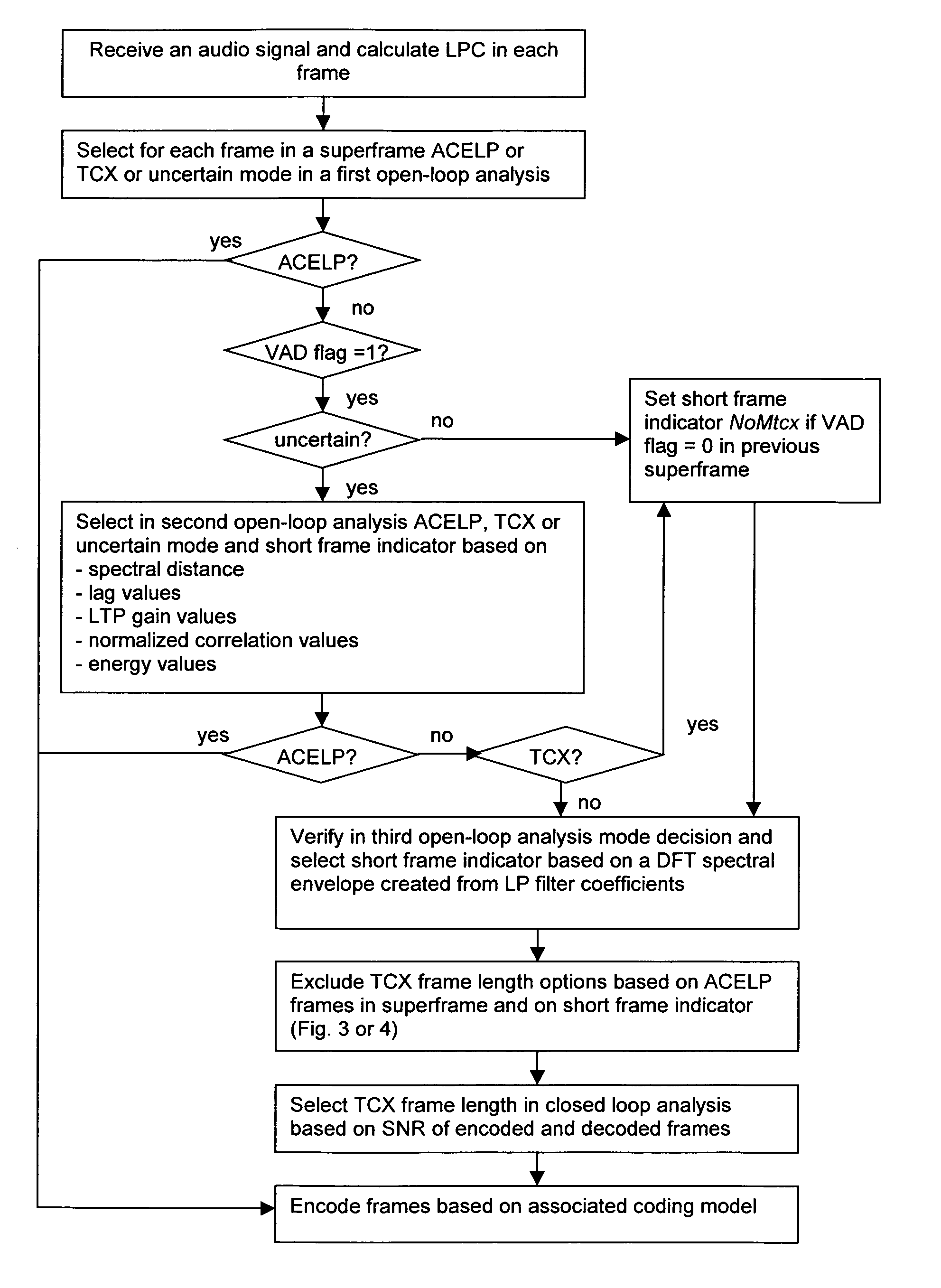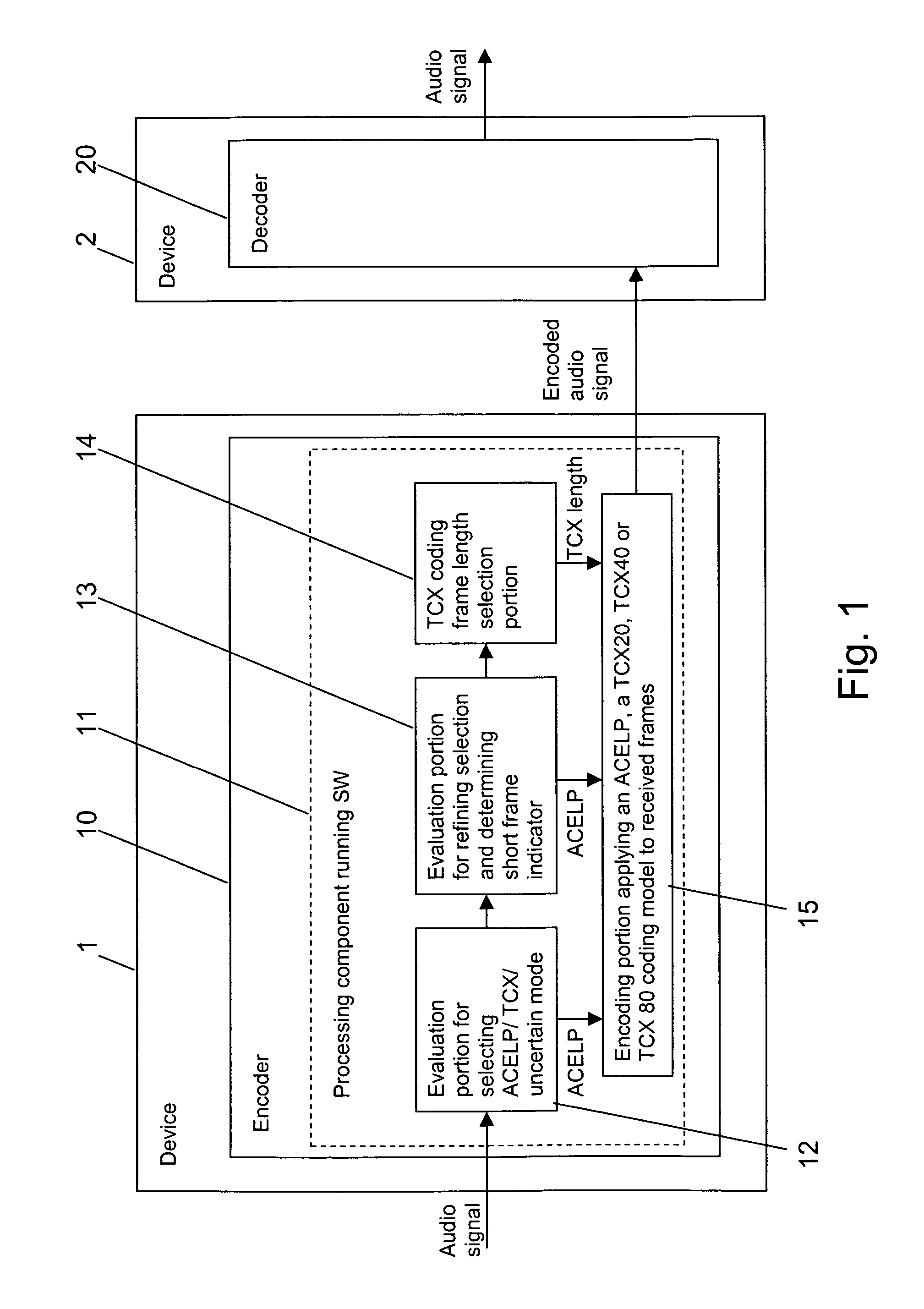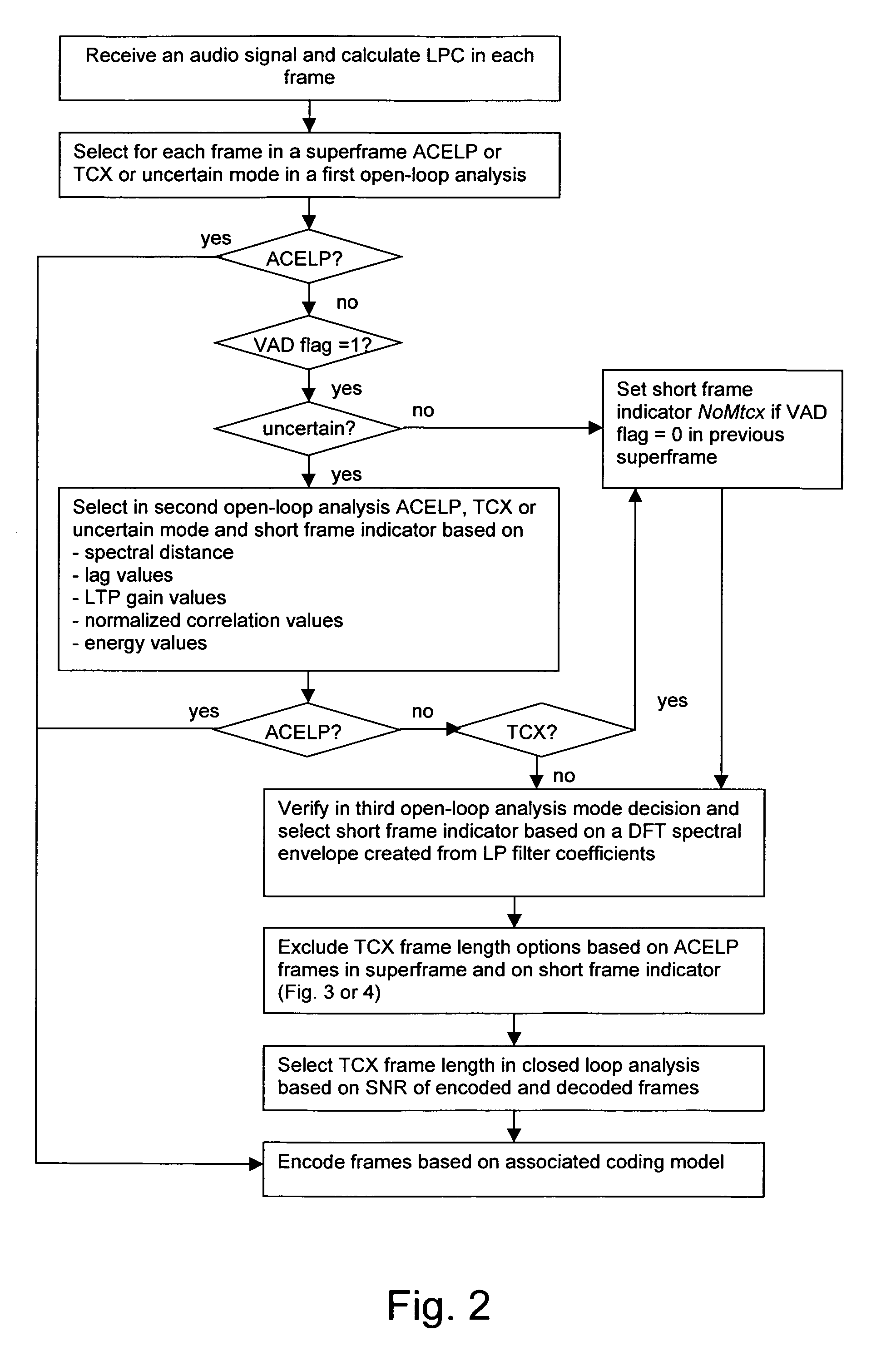Audio encoding with different coding frame lengths
a technology of coding frame and audio signal, which is applied in the field of audio encoding with different coding frame lengths, can solve the problems of not good for periodic speech signals, poor performance of speech codecs based on human speech production systems, and poor quality of transform-coded speech, so as to reduce the complexity, and reduce the number of coding frame length options
- Summary
- Abstract
- Description
- Claims
- Application Information
AI Technical Summary
Benefits of technology
Problems solved by technology
Method used
Image
Examples
Embodiment Construction
[0042]FIG. 1 is a schematic diagram of an audio coding system according to an embodiment of the invention, which allows a selection of the coding frame length of a transform coding model.
[0043]The system comprises a first device 1 including an AMR-WB+ encoder 10 and a second device 2 including an AMR-WB+ decoder 20. The first device 1 can be for instance an MMS server, while the second device 2 can be for instance a mobile phone.
[0044]The first device 1 comprises a first evaluation portion 12 for a first selection of a coding model in an open loop approach. The first device 1 moreover comprises a second evaluation portion 13 for refining the first selection in a further open loop approach and for determining in parallel a short frame indicator as one control parameter. The first evaluation portion 12 and the second evaluation portion 13 form together a parameter selection portion. The first device 1 moreover comprises a TCX frame length selection portion 14 for limiting the coding f...
PUM
 Login to View More
Login to View More Abstract
Description
Claims
Application Information
 Login to View More
Login to View More - R&D
- Intellectual Property
- Life Sciences
- Materials
- Tech Scout
- Unparalleled Data Quality
- Higher Quality Content
- 60% Fewer Hallucinations
Browse by: Latest US Patents, China's latest patents, Technical Efficacy Thesaurus, Application Domain, Technology Topic, Popular Technical Reports.
© 2025 PatSnap. All rights reserved.Legal|Privacy policy|Modern Slavery Act Transparency Statement|Sitemap|About US| Contact US: help@patsnap.com



